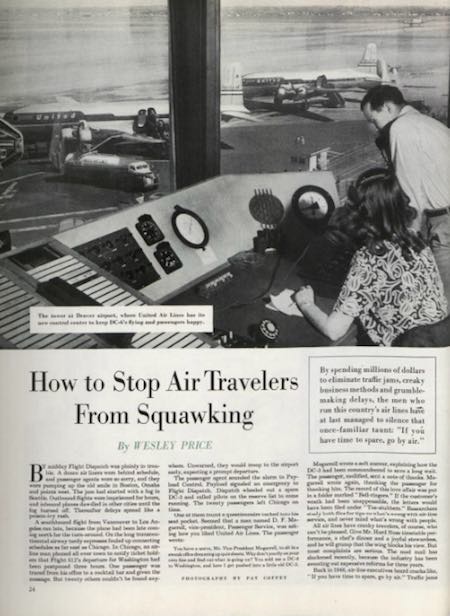How to Stop Air Travelers from Squawking
On June 11, 1949, the Saturday Evening Post published an article called “How to Stop Air Travelers From Squawking.” The gist of the article was that airlines were going to great lengths to improve airline efficiency, with the seeming goal of making air passengers happier.
Between 1946 and 1948, on-time arrivals had improved by 65%, due to a combination of technique and technology. United led these improvements by applying assembly-line upgrades to planes and installing state-of-the-art communication systems. The United management team also went to great lengths in order to satisfy customers.
Every morning in Denver, 20 United department heads would gather to “review tactical defeats suffered in the previous twenty-four hours and plan the current day’s battle order… If United mislays your suitcase, the high command hears about it.”
This attention to customers didn’t just take place in the boardroom. A pilot, upon discovering that he had a planeload of non-English-speaking Chinese people headed to Hartford, made sure that a Chinese-speaking representative was there to meet them. When a woman bruised her leg in a car on the way to the airport, “United had a doctor intercept her plane at the Denver airport. Another doctor treated her in Chicago. A passenger agent escorted her to a hotel in New York. She would have been astonished to know that Denver had pulled the wires, and that her limp was reported to a roomful of top executives at the next day’s briefing.”
The sheer scale and logistics of modern air travel likely makes such attention to individual comfort impossible. And we are no doubt safer in the air than we were in 1949. But one can still be wistful for an era where people were treated like customers, and not cattle or criminals.
